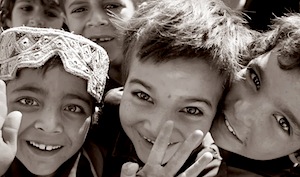- Fridtjof Nansen (Norway) 1921 – 1930
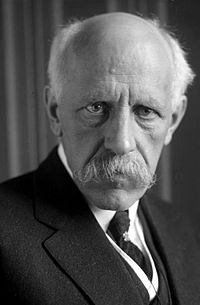 International refugee assistance efforts began formally in August 1921, when the International Committee of the Red Cross called on the League of Nations to assist more than one million Russian refugees displaced by the civil war, many of them threatened by famine. The League responded by appointing Fridtjof Wedel-Jarlsberg Nansen as “High Commissioner on behalf of the League of Nations to address the problems of Russian refugees in Europe.” At the time, Nansen was already famous for his activities as a scientist, polar explorer, political activist and diplomat.
International refugee assistance efforts began formally in August 1921, when the International Committee of the Red Cross called on the League of Nations to assist more than one million Russian refugees displaced by the civil war, many of them threatened by famine. The League responded by appointing Fridtjof Wedel-Jarlsberg Nansen as “High Commissioner on behalf of the League of Nations to address the problems of Russian refugees in Europe.” At the time, Nansen was already famous for his activities as a scientist, polar explorer, political activist and diplomat.
Fridtjof Wedel-Jarlsberg Nansen was born on October 10, 1861, in Kristiania (present-day Oslo), Norway. Although his family was relatively wealthy, he learned the value of hard work and discipline as a child. In 1888, he obtained a PhD in zoology and, in the same year, was the first to cross the interior ice of Greenland. He also led a 25-month expedition through the Arctic Ocean, getting closer to the North Pole than anyone before. In 1905, he acted diplomatically in the process of Norwegian independence from Sweden and from 1906 to 1908 served as his country’s ambassador to London. During World War I, he led Norway’s diplomatic efforts to secure food and neutrality in the conflict, working tirelessly for the success of the League of Nations, which he saw as a new hope for humanity.
Nansen served as the first High Commissioner of the League of Nations from 1920 to 1930, with his initial responsibilities extended to include Russian, Greek, Armenian Bulgarian refugees and other specific groups. His intelligence, courage and charisma were decisive in gaining support from governments and humanitarian agencies.
With only £ 4,000 donated by the League of Nations, Nansen undertook the task of defining the legal status of Russian refugees, organizing their employment in the host countries (working closely with the International Labor Organization and assisting some 60,000 refugees to find Employment) and the repatriation of 450,000 prisoners of war in two years, through the first major humanitarian operation of the League.
As for the legal protection of refugees, Nansen noted that one of the major problems faced by the uprooted people was the lack of internationally recognized identification papers attesting to refugee status. Thus, it organized an international conference which resulted in the creation of travel and identity documents for refugees, commonly called “Nansen passports”, later recognized by more than fifty countries.
When negotiations with the USSR on repatriation of Russian refugees were thwarted, Nansen took additional measures, providing for a secure legal status for refugees in host countries, the first legal instruments that would later serve as a basis for the 1933 Conventions and 1951 on refugees.
In 1922, Nansen was confronted with another crisis: the exodus of almost two million refugees from the war between Greece and Turkey. He went immediately to the site to coordinate international aid efforts. When he was in Greece, Nansen emphasized the neutrality of the High Commissioner: despite personally blaming Turkey, he assisted both the Greeks and the Turks, meeting officials from both camps and assisting in the repatriation of hundreds of Greeks and Turks .
Nansen created what would become the basic structure of UNHCR (a commissariat with a High Commissioner in Geneva and local representatives in the host countries). In 1922 his humanitarian work with Russian refugees was rewarded with the Nobel Peace Prize.
After his death in 1930 due to stroke, the Nansen International Office was responsible for continuing his work, perpetuating Nansen’s courage and compassion as inspiration. Since 1954, UNHCR has awarded the Nansen Prize annually to individuals or groups of people who have provided exceptional services to refugees.
Sources: Vídeo “An introduction to Fridtjof Nansen – UNHCR, MNC, Nobel Prize, UNHCR.
- James McDonald (USA) 1933 – 1935
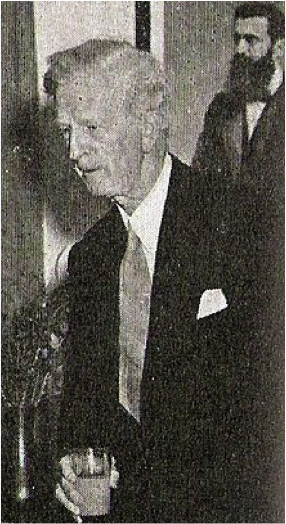 In the 1930s, the international community faced the refugee flight from Nazi Germany. Although the League of Nations refused to fund refugee assistance directly, it designated James McDonald, American professor and journalist, as “Independent High Commissioner for Refugees (Jews and others) from Germany.” From 1933 to 1935, he fought restrictions on immigration worldwide for the resettlement of Jewish refugees.
In the 1930s, the international community faced the refugee flight from Nazi Germany. Although the League of Nations refused to fund refugee assistance directly, it designated James McDonald, American professor and journalist, as “Independent High Commissioner for Refugees (Jews and others) from Germany.” From 1933 to 1935, he fought restrictions on immigration worldwide for the resettlement of Jewish refugees.
He distinguished himself in the coordination of voluntary agencies, which provided most of the funds for refugee assistance. Throughout the two years of his mission as a Commissar he assisted in the resettlement of 80,000 refugees in Palestine and elsewhere.
In September 1935, James McDonald was confronted with his greatest challenge when the Nazis adopted the Nuremberg laws, depriving the Jews of citizenship and the right to vote. The Nazis also encouraged the Germans to fire their Jewish employees and boycot Jewish enterprises. Under the pressure of persecution, the influx of refugees increased. Frustrated by the lack of firmer action by the League, McDonald resigned on December 27, 1935. In a widely published letter in the international press at the time, he warned:
“When national politics threatens to demoralize human beings, considerations of diplomatic convenience must yield to those of the principles of humanity. It would be dishonest on my part not to draw attention to the current situation and urge world public opinion to act, through the League and the Member States and other countries, to prevent ongoing and future tragedies. ”
Despite McDonald’s efforts, his call for direct intervention in Germany was not heard. The League of Nations continued to regard the treatment of Jews as a purely internal matter. Although his efforts failed, McDonald has distinguished himself as one of the first advocates of decisive political action to address the root causes of refugee movements.
Sources: Wikipedia, Extract from the book “The Situation of Refugees in the World. 50 years of humanitarian action; UNHCR; 2000 “.
- Gerrit Jan van Heuven Goedhart (Netherlands) 1951 – 56
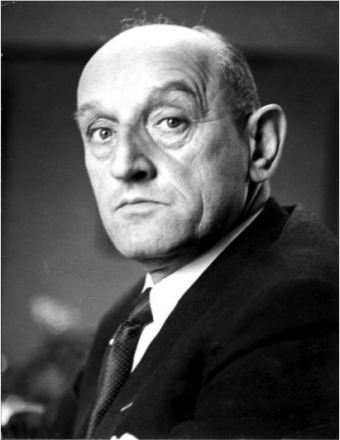
Prior to his appointment as the first United Nations High Commissioner for Refugees, Gerrit van Heuven Goedhart was a lawyer and journalist. During World War II, he was active in the Dutch resistance and in his government in exile in London.
As High Commissioner, Van Heuven Goedhart devoted much of his energy to raising funds for some 2.2 million refugees still displaced after the 2nd GM. By the time of his unexpected demise, he had managed to put UNHCR in a much more solid financial position than five years earlier. It shifted the focus of the organization’s work, overseas resettlement to local integration in Europe, and its achievements in favor of refugees were recognized in 1954 when UNHCR was awarded the Nobel Peace Prize.
Source: UNHCR
- Auguste R. Lindt (Switzerland) 1956 – 60
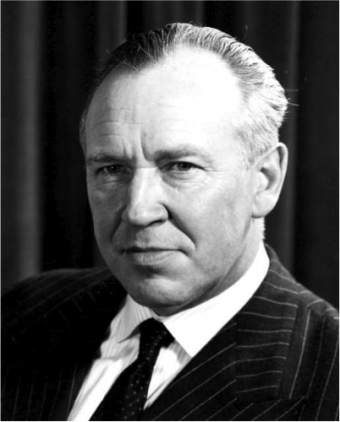 Auguste Lindt worked as an international correspondent for several European newspapers in the 1930s and served in the Swiss neutral army during World War II. Moving to the diplomatic field, he chaired the Executive Committee of UNICEF and, from 1953, served as an observer for Switzerland at the United Nations.
Auguste Lindt worked as an international correspondent for several European newspapers in the 1930s and served in the Swiss neutral army during World War II. Moving to the diplomatic field, he chaired the Executive Committee of UNICEF and, from 1953, served as an observer for Switzerland at the United Nations.
Almost immediately after his appointment as High Commissioner, he mobilized support for some 200,000 Hungarians who had fled to Austria and Yugoslavia as a consequence of the Soviet repression of the Hungarian insurrection of 1956. Soon after, he began a program of assistance for some 260,000 Algerians Who had fled to Morocco and Tunisia during the Algerian war of independence. His diplomatic dealings in such sensitive situations have greatly contributed to ensuring acceptance by UNHCR States as an organization with global responsibilities.
Source: UNHCR
- Félix Schnyder (Switzerland) 1960-65
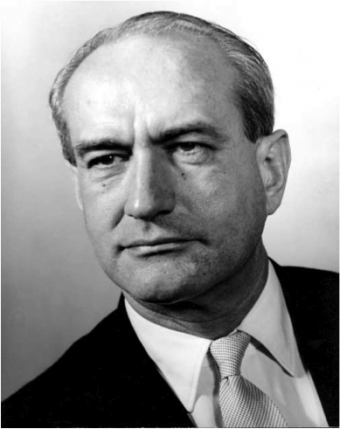 Like his predecessor, Félix Schnyder was a Swiss diplomat who chaired the Executive Board of UNICEF and served as an observer for Switzerland at the United Nations before being appointed High Commissioner. Schnyder oversaw the repatriation of the Algerian refugees from Tunisia and Morocco, an operation that marked the first of many UNHCR involvement in major repatriation and reintegration operations. He also secured the support of the General Assembly for the increasing use of UNHCR’s “good offices” in mediating between governments of refugee crises in the world, particularly in assisting Rwandan refugees in the Great Lakes region. By expanding UNHCR’s activities in Africa, it has helped ensure future international recognition of the global character of the refugee problem. It played an important role early in the process leading to the adoption of the 1967 Protocol.
Like his predecessor, Félix Schnyder was a Swiss diplomat who chaired the Executive Board of UNICEF and served as an observer for Switzerland at the United Nations before being appointed High Commissioner. Schnyder oversaw the repatriation of the Algerian refugees from Tunisia and Morocco, an operation that marked the first of many UNHCR involvement in major repatriation and reintegration operations. He also secured the support of the General Assembly for the increasing use of UNHCR’s “good offices” in mediating between governments of refugee crises in the world, particularly in assisting Rwandan refugees in the Great Lakes region. By expanding UNHCR’s activities in Africa, it has helped ensure future international recognition of the global character of the refugee problem. It played an important role early in the process leading to the adoption of the 1967 Protocol.
Source: UNHCR
- Sadruddin Aga Khan (Iran) 1965 – 77
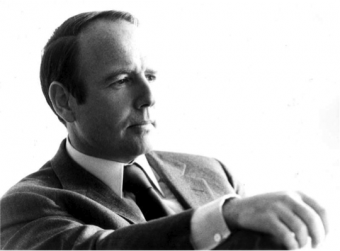 Prince Sadruddin Aga Khan worked for UNHCR before becoming High Commissioner. He led missions in the Middle East and Asia and served as Deputy High Commissioner between 1962 and 1966. At the time he was appointed High Commissioner, UNHCR’s budget for Africa surpassed that of Europe, marking a definite shift from Europe to developing countries .
Prince Sadruddin Aga Khan worked for UNHCR before becoming High Commissioner. He led missions in the Middle East and Asia and served as Deputy High Commissioner between 1962 and 1966. At the time he was appointed High Commissioner, UNHCR’s budget for Africa surpassed that of Europe, marking a definite shift from Europe to developing countries .
He strengthened the organization’s relations with African governments and helped improve interagency cooperation within the United Nations to address the problems of mass displacement in sub-Saharan Africa and Asia. He played a key role during the Bangladesh refugee crisis in 1971 and assistance to Asians expelled from Uganda in 1972.
Source: UNHCR
- Poul Hartling (Denmark) 1978-85
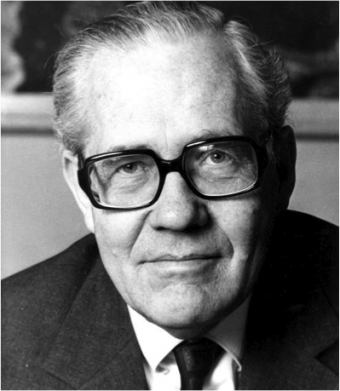 Poul Hartling served first as Foreign Minister and then as Prime Minister of Denmark before becoming High Commissioner in 1978. During his eight years in office, refugee problems became highly politicized with the intensification of the Cold War. The massive and persistent exodus from Indochina and the large-scale international response have boosted the organization to a leading role in a highly politicized and large-scale humanitarian operation.
Poul Hartling served first as Foreign Minister and then as Prime Minister of Denmark before becoming High Commissioner in 1978. During his eight years in office, refugee problems became highly politicized with the intensification of the Cold War. The massive and persistent exodus from Indochina and the large-scale international response have boosted the organization to a leading role in a highly politicized and large-scale humanitarian operation.
During his term as High Commissioner, the organization launched other large-scale emergency relief operations in the Horn of Africa, Central America and Afghan refugees in Asia. UNHCR was awarded the Nobel Peace Prize for the second time in 1981, largely because of its key role in helping to manage the Vietnamese refugee crisis.
Source: UNHCR
- Jean-Pierre Hocké (Switzerland) 1986-89
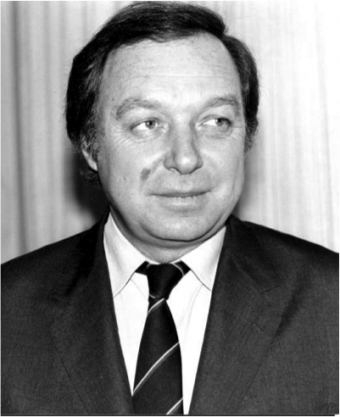 Jean-Pierre Hocké served as the Director of Operations of the International Committee of the Red Cross prior to his appointment as High Commissioner. During his tenure, the Indochina refugee crisis continued. The Integrated Plan of Action, launched during its period as High Commissioner, instituted regional procedures for determining refugee status and provided for the voluntary repatriation of Vietnamese refugees. Hocké also played a key role in launching the “CIREFCA Process” in Central America to consolidate peace in the region by expanding assistance not only to returnees but also more broadly to war-affected populations. During his tenure, UNHCR played an important role in establishing and managing large camps for Ethiopian refugees in Sudan and for Somali refugees in Ethiopia.
Jean-Pierre Hocké served as the Director of Operations of the International Committee of the Red Cross prior to his appointment as High Commissioner. During his tenure, the Indochina refugee crisis continued. The Integrated Plan of Action, launched during its period as High Commissioner, instituted regional procedures for determining refugee status and provided for the voluntary repatriation of Vietnamese refugees. Hocké also played a key role in launching the “CIREFCA Process” in Central America to consolidate peace in the region by expanding assistance not only to returnees but also more broadly to war-affected populations. During his tenure, UNHCR played an important role in establishing and managing large camps for Ethiopian refugees in Sudan and for Somali refugees in Ethiopia.
Source: UNHCR
- Thorvald Stoltenberg (Norway) Jan. 1990 – Nov. 1990.
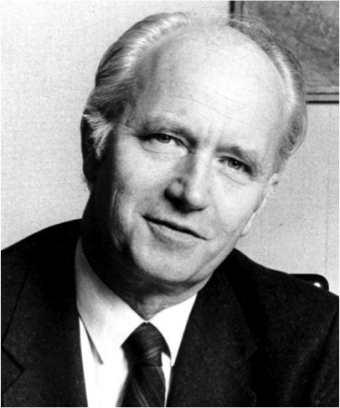
Thorvald Stoltenberg was Norway’s Minister of Foreign Affairs prior to his appointment as High Commissioner. His short-term tenure marked the beginning of UNHCR’s increased involvement in major United Nations peacekeeping operations.
As High Commissioner, he oversaw various repatriation operations, particularly in Central America.
He resigned in November 1990 to return to his former position as Norway’s Foreign Minister. In May 1993, at the height of the Bosnian war, he returned to the United Nations as Special Representative of the Secretary General for the former Yugoslavia.
Source: UNHCR
- Sadako Ogata (Japan) 1990-2000
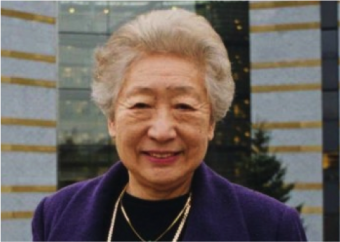
Prior to her appointment as High Commissioner, Sadako Ogata was dean of the Faculty of Foreign Studies at the University of Sofia in Tokyo. During her academic life, she also held positions at the United Nations, presiding over the UNICEF Executive Board in 1978-79, serving on the UN Commission on Human Rights and as an independent expert on the human rights situation in Burma ( Current Myanmar).
As High Commissioner, she oversaw large-scale emergency operations in northern Iraq, Bosnia and Herzegovina, Kosovo and the Great Lakes region of Africa. UNHCR’s budget and staff numbers have more than doubled during its tenure, and the organization has become increasingly involved in assisting IDPs and other vulnerable civilians in conflict situations. Emphasizing the connection between refugees and international security, it strengthened UNHCR’s relations with the United Nations Security Council.
Source: UNHCR
- Ruud Lubbers (Netherlands) 2001 – 2005
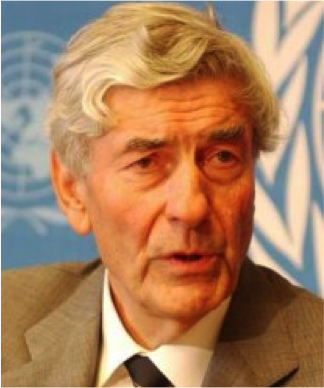
Ruud Lubbers, a former Dutch prime minister, took office when UNHCR celebrated its 50th anniversary. As High Commissioner, he has focused much of his attention on developing new and innovative approaches to finding solutions for the world’s refugees.
He oversaw UNHCR’s major programs and emergency operations in several countries and regions, including West Africa, Angola and Afghanistan, where more than three million refugees and IDPs have returned home in one of the agency’s greatest repatriations ever.
Lubbers also introduced the Convention Plus initiative, which focused on building, on the basis of the 1951 Refugee Convention, the development of special tools that could address some of the new and current challenges through multilateral approaches.
Source: UNHCR
- António Guterres (Portugal) 2005 – Atual
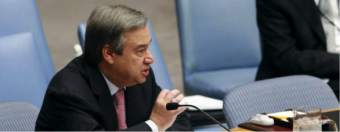
António Guterres became UN High Commissioner for Refugees on 15 June 2005, succeeding Ruud Lubbers of the Netherlands. Former Prime Minister of Portugal, Guterres was elected by the General Assembly of the United Nations for a term of five years and is the tenth High Commissioner of the UN agency for refugees.
Upon entering UNHCR, Guterres stated that he joined the agency with conviction, humility and enthusiasm. “Belief because I truly believe in the values of this office and want to strive to make them prevail throughout the world. Humility because I have much to learn and I will depend on all of you for it.” Enthusiasm because I could not choose a nobler cause To fight, “he said.
Before becoming UNHCR High Commissioner, Guterres worked for more than 20 years for the government and the public service of Portugal. He was Prime Minister of the country from 1996 to 2002 and during his tenure led the international effort to resolve the crisis in East Timor. As chair of the European Council in 2000, he co-chaired the first Europe-Africa summit and led to the adoption of the so-called “Lisbon Agenda”. He also founded the Portuguese Council for Refugees in 1991 and joined the State Council from 1991 to 2002.
From 1981 to 1983, Guterres participated in the Parliamentary Assembly of the Council of Europe and was also chairman of the Committee on Migration, Refugees and Demography. In addition, he was an active member of the Socialist International, acting as vice president of the organization from 1992 to 1999 and later becoming its president until June 2005.
António Guterres was born on April 30, 1949 in Lisbon and graduated from Instituto Superior Técnico, where he teaches as a guest teacher. He is married and has two children.
Source: ACNUR




